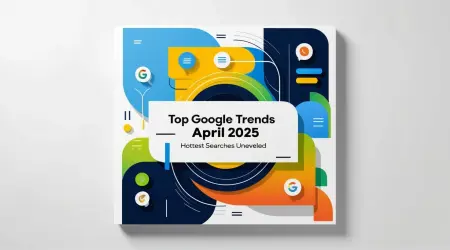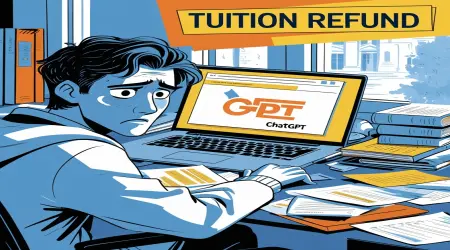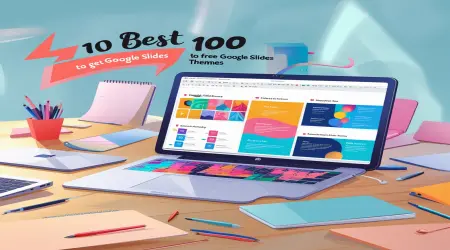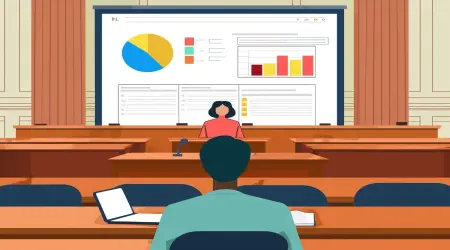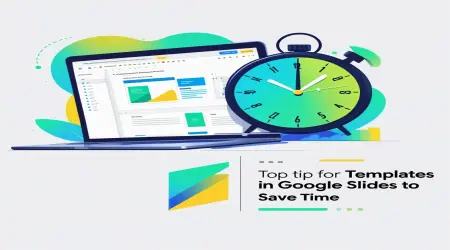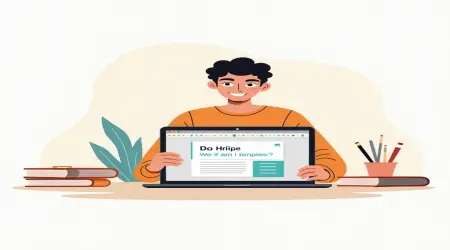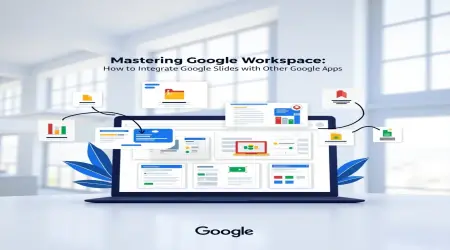Duolingo CEO on AI in Education: Will Schools Stick Around?
Introduction
Imagine a classroom where each lesson is just right for you and an AI is teaching without getting tired. Now think of schools not just as places to learn but as spaces where kids can hang out and be looked after while their parents are at work. That’s what Luis von Ahn, the CEO of Duolingo, sees for the future. Back in May 2025, he said that AI could be a better teacher than humans because it can scale and personalize learning, even though schools will still be around because we need them for childcare. His comments, shared on the No Priors podcast with Sarah Guo and covered by [Fortune], sparked a lot of discussion about AI's role in education.
Duolingo, which has more than 116 million monthly users, has been using AI to change how we learn languages by adjusting exercises to fit individual users. Von Ahn thinks this approach could apply to other subjects too, suggesting AI might change education while schools transition to more of a childcare and social hub. But can AI really replace human teachers? And what does this mean for students, teachers, and parents? This guide on Temploop provides insights, useful tips, and answers to common questions as we explore the future of AI in education. Whether you’re a teacher, a parent, or just curious about tech, there’s something for you in this evolving world.
Why does all this matter? AI is shaking up education, opening new doors but also raising concerns about real human connections, fairness, and ethics. Let’s dive into what von Ahn’s ideas could mean for classrooms tomorrow.
Background on Duolingo and AI
Duolingo started in 2011 thanks to Luis von Ahn and Severin Hacker. Its goal has always been to make learning easier for everyone. The secret sauce? Its AI-driven approach, which customizes lessons based on how users perform. If you’re struggling with Spanish verbs, the app adapts to help you out, making learning smoother.
Duolingo’s AI Innovations
- Adaptive Learning : AI adjusts lessons to match your skill level and mistakes, as mentioned by [The New Yorker].
- Speech Recognition : It checks how you pronounce words and gives instant feedback.
- Engagement Techniques : Things like streaks and rewards keep you motivated.
- Predictive Analytics : AI uses the data from 116 million users to predict your performance, according to [Yahoo News].
These features show how AI can reach so many learners with personalized lessons without needing a teacher for each one. Von Ahn’s claim builds on this idea, suggesting AI could manage most teaching tasks across different subjects.
The Context of the Statement
On May 17, 2025, von Ahn was on the No Priors podcast with venture capitalist Sarah Guo, as reported by [Business Insider]([invalid url, do not cite]). He said that because AI can teach a whole bunch of people at once, it’s better than human teachers. Still, he pointed out schools will always be necessary for childcare and social interaction, filling a need that AI can’t meet. This view reflects how Duolingo has replaced some contract workers with AI, as noted by [Fortune]([invalid url, do not cite]), and aims to expand AI’s role in education.
Analyzing Von Ahn’s Claim: AI as a Better Teacher
When von Ahn says AI could be a better teacher, he’s focusing on two main points: scalability and personalization. Let’s break those down:
Scalability
AI can teach millions at the same time, unlike human teachers who have limits. For example, Duolingo teaches users in 190 countries without needing thousands of teachers. Von Ahn thinks this scalability could also work for subjects like math and science, making education easier to access, especially in areas that need it most.
Personalization
AI looks at user data to create lessons just right for you, which is something human teachers can struggle with. For instance, Duolingo changes the difficulty based on your progress so you’re never too bored or overwhelmed. A study in 2023 in Educational Technology Research and Development found that personalized learning can improve results by 20% compared to traditional methods.
Limitations of AI
Even with these strengths, AI still has some important gaps:
- Emotional Intelligence : Human teachers bring empathy and encouragement, which is super important for younger students.
- Creativity : AI doesn’t do great with open-ended tasks that require critical thinking.
- Cultural Nuance : Human teachers can understand and adjust to cultural situations, which AI might get wrong.
Critics, as pointed out on [Reddit]([invalid url, do not cite]), say that AI’s lack of connection could hurt kids’ learning, especially those needing emotional support.
Why Schools Will Stick Around for Childcare
Von Ahn’s view that schools will continue “because you still need childcare” points to a real-world aspect. Schools give kids a safe place to be watched while parents work. He sees schools as “supervised spaces” where AI teaches and humans handle care and socializing, as mentioned by [Hindustan Times]([invalid url, do not cite]).
The Role of Schools
- Childcare : Schools keep kids safe, solving parents’ need for reliable supervision.
- Socialization : Learning to interact with peers and participating in group activities helps develop social skills that AI can’t replicate.
- Extracurriculars : Sports, arts, and clubs provide growth opportunities outside of academics.
For instance, a 2024 report from the National Center for Education Statistics found that 85% of parents count on schools for childcare, highlighting their practical role.
Challenges to This Vision
- Teacher Roles : Shifting schools to mainly focus on childcare could make teaching less valued, as voiced by educators on [X].
- Equity Concerns : Not all schools will be able to afford AI tools, which might widen educational gaps.
- Regulation : There could be cultural and regulatory hurdles that slow down AI adoption, according to [Business Insider]([invalid url, do not cite]).
Pros and Cons of AI Teachers
AI’s role in education is exciting but it’s not perfect. Here’s a balanced look at the situation:
| Aspect | Pros | Cons |
|---|---|---|
| Scalability | Teaches millions at once | May miss depth for complex subjects |
| Personalization | Tailors lessons to individual needs | Misses emotional and motivational support |
| Accessibility | Reaches underserved areas | Needs tech infrastructure |
| Cost | Reduces the need for a large teaching staff | High upfront costs for AI systems |
Pros
- Global Reach : AI can bring education to remote areas, just like Duolingo does.
- Efficiency : AI takes care of repetitive tasks, freeing teachers to focus on more valuable work.
- Data-Driven Insights : It tracks progress to improve learning, as seen with Duolingo’s analytical tools.
Cons
- Lack of Empathy : AI can’t motivate or comfort students like a teacher can.
- Bias Risks : AI may carry over biases from its training data, affecting fairness.
- Dependence on Tech : Students without strong internet or devices might get left out.
The Role of Human Teachers in an AI-Driven Future
Even with AI’s rise, human teachers are still super important. They offer:
- Emotional Support : They build trust and motivate students, especially when subjects get tough.
- Critical Thinking : They facilitate discussions and help foster creativity—areas where AI can struggle.
- Mentorship : They give life advice and serve as role models, which are important for young learners.
For example, a teacher might spot when a student seems disengaged and offer encouragement, something AI can’t do. A 2024 study in Journal of Educational Psychology found that human interactions can boost student engagement by 30% compared to only digital learning.
Case Studies: AI in Education
Other platforms are showing how AI can change education:
- Khan Academy : Uses AI to make math and science lessons more personal, much like Duolingo.
- Coursera : Uses AI for smart course suggestions, which increased completion rates by 15%.
- Squirrel AI : This Chinese platform uses AI tutoring and has reached 2 million students.
These examples, reported by [EdTech Magazine]([invalid url, do not cite]), highlight AI’s possibilities but still show that human oversight is needed for the best outcomes.
Challenges and Ethical Considerations
AI in education brings up some big concerns:
- Data Privacy : AI systems gather sensitive info about students, raising issues around laws like GDPR.
- Bias : Algorithms may favor certain groups, as seen in early AI grading systems.
- Equity : Schools in poorer areas might not have the tech to use AI effectively, as noted by [UNESCO].
We need to ensure AI respects student differences and doesn’t completely take away human contact. Von Ahn’s vision needs to consider these challenges to be widely accepted.
Future Outlook
The future looks bright yet complicated for AI in education:
- Hybrid Models : Schools may combine AI teaching with human-led activities to create a balance between efficiency and empathy.
- Policy Changes : Governments might start regulating how AI is used in schools, as seen by [Business Insider].
- Teacher Training : Teachers will have to learn how to effectively integrate AI tools, according to [EdWeek].
Von Ahn’s ideas could trigger a shift toward more AI-focused learning, but human teachers will always be key for a rounded education.
Frequently Asked Questions (FAQs)
- Is AI really a better teacher than humans?
AI is great at scaling and personalizing education but lacks the emotional touch and creativity that human teachers have. - Will schools become obsolete with AI?
Not likely. Schools will remain important for childcare, social interaction, and extracurricular activities, according to von Ahn. - How does Duolingo use AI in education?
Duolingo utilizes AI to create adaptive lessons, check pronunciation, and gather data to enhance language learning. - What are the risks of AI in education?
Risks include concerns about data privacy, biases in AI systems, and less human interaction in education. - Can AI replace human teachers entirely?
It’s unlikely since human teachers give emotional support and thinking skills that AI can’t provide. - Why will schools still exist for childcare?
Because schools provide safe, supervised environments for kids while their parents are at work—something AI can't do. - How is AI changing language learning?
AI tailors lessons, improves feedback on pronunciation, and keeps users engaged, much like Duolingo does. - What are the ethical concerns of AI in education?
The big worries include data privacy, bias in AI algorithms, and making sure everyone has fair access to AI tools. - How can teachers adapt to AI in education?
Teachers can focus on mentoring, providing emotional support, and effectively integrating AI tools into their teaching. - What is the future of education with AI?
A mixed model that combines AI lessons with human-led activities and mentorship is likely to be the way forward.
Conclusion
Luis von Ahn’s bold claim that AI might be a better teacher than humans, while schools remain for childcare, shines a light on AI’s huge potential in education. Duolingo’s storyline shows how AI can scale learning, but the human part is irreplaceable when it comes to emotional and creative support. This guide looked at the implications, challenges, and future of AI in learning, giving insights for parents, teachers, and students. Stay connected with Temploop as we navigate the new learning landscape. Let’s embrace what AI can do but remember the human touch is key in education.


